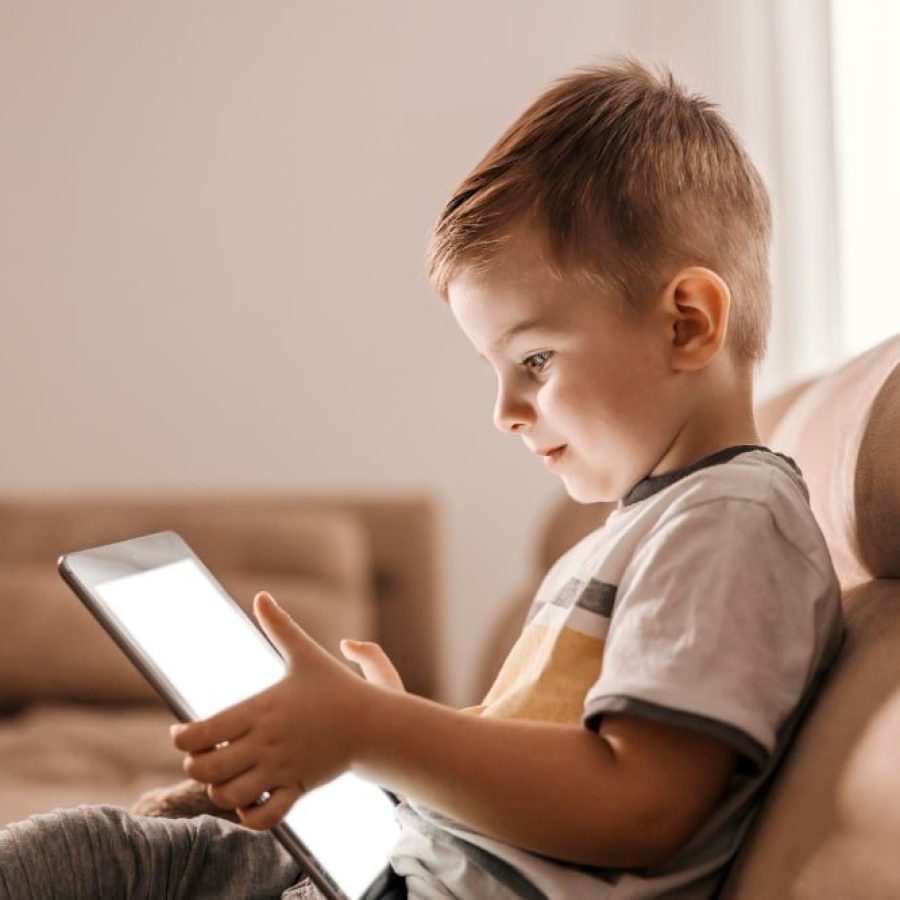As a parent, you’re probably concerned with opening as many doors as possible in order for our child to grow, develop and thrive in an ever-changing world. If that’s the cause, you might have already wondered about what could be the impacts of technology in early childhood education.
Aspects of technology
There’s no stopping technology as part of our everyday lives. You either learn how to deal with that, or you’ll likely be stuck in time.
The sooner children are used to it and know how to handle the resources it provides, the better the chances of establishing a healthy relationship with technology and developing a digital literacy.
Technological resources are increasingly becoming part of our routines. Think about all the apps and activities you use your phone to deal with: smart devices that control light switches, room temperature; monitor activity in a specific place for security purposes; gadgets that check out vital signs of elderly people that need constant monitoring.
These resources can also be adapted to more educational needs and, by that matter, can be used by young students and children.
What to watch out for when it comes to technology and children
Have a look at these simple, yet important boundaries that can help your child while they’re navigating through their relationship with technology.
Screen time
This is not only related to exposure to artificial lights. The more the children are drawn to the content on screen, the more likely they get to not sit properly – which could lead to bad posture problems. They can also get hyperstimulated and have a hard time relaxing after they disconnect their phone or tablet.
Last but not least: you can’t fully live your life behind a screen, so spending time with friends and family and having an active lifestyle can not be overlooked.
Safety
If children are inappropriately stimulated by an ad, they might click on something they shouldn’t. As a result, personal and financial data can be lost (either yours or of your child’s), which can cause a lot of bureaucratic headaches.
Children should not interact with content that requires them to share their location, personal information or banking data. Make sure to tell your children about these limits and encourage them to always ask for adult guidance if something feels off while they’re on screen time.
Appropriate content
Unfortunately, ill-intended people can cross our way anywhere – it wouldn’t be different when it comes to digital spaces. There is a lot of interesting and safe curated content available, but it’s always safe to keep an open eye on what children are consuming in terms of content.
It is part of parents’ attributions to protect their child as much as they can, which can mean showing them what is appropriate content, and instructing the child to walk away if they come across something that feels off or wrong.
Make sure it’s appropriate to the child’s age and that they’re sufficiently mature to understand the core message of that content.
Technology as an childhood educational ally
Technology can and should be used for educational purposes. This is because there are so many possibilities within these gadgets!
Technology diminishes distances; allows people to connect with different cultures; creates opportunity to explore the world without leaving your home; you can learn a foreign language by listening to natives speak and broaden your cultural and social horizons.
Technology also allows children with disabilities to use specific resources and keep up with their classroom colleagues.
Childhood period and how to properly use technology
By now it’s clear that technology is inevitably part of children’s lives. In fact, the interaction they have with the ever-changing technological resources today can even influence the work they can choose in the future. It’s ok to allow your children to interact with digital platforms, as long as there is proper supervision.
So let’s have a look at how these interactions can happen in a helpful manner within different ambiences.
At home
It’s quite possible that you’ll eventually use your phone, tablet or personal computer when you’re at home. If you spend too much time on it, just as naturally, your child will be curious about what it is on that square surface that keeps people involved!
So, as usual, set an example. Use your devices responsibly! Don’t deprioritize family time and face to face connections by sticking your face behind a phone.
Also, limit screen time as something natural, as part of the house rules as a whole. Try not to use it as a punishment tool because this could only get children craving their phone or tablet even harder.
As a last recommendation, try to combine using technology while enjoying your time together! Play a game together, make drawings, watch films and explore different settings while you’re also interacting with the people around you.
At school
Going to school is important for children not only for being a place to learn, but also to create social interactions and have deeper connections with other students. Technological resources are also a part of that!
By interacting with technology from a young age, students can learn to:
- improve their sharing abilities with another person;
- get used to using technological resources as problem-solving tools;
- interact with different media (video, podcasts, images) and learn the positives of what each has to offer;
- naturalize technology as part of their life – which can help if they ever decide to enroll in a technology-based academic course or work;
- learn that the same device can serve for both educational and leisure time, so they can leverage its use!
Naturally, technology does not exclude the need of having real face to face interactions and stop experiencing the world around them! But we see it’s perfectly possible to foster a healthy relationship with digital gadgets and devices.
Final advice: make sure to maintain a close relationship with your child’s pediatrician. They can give you proper instruction on how to balance good use of technology according to the phase your little one is going through while they grow up!
There’s no question that, as a parent, you can expect a certain impact in early childhood education. Kids should be encouraged to use technology as a learning resource! And if you’re interested in making good choices towards your kids’ future, we invite you to learn about High-Quality Preschool: How To Find One And The Benefits For Your Children.


